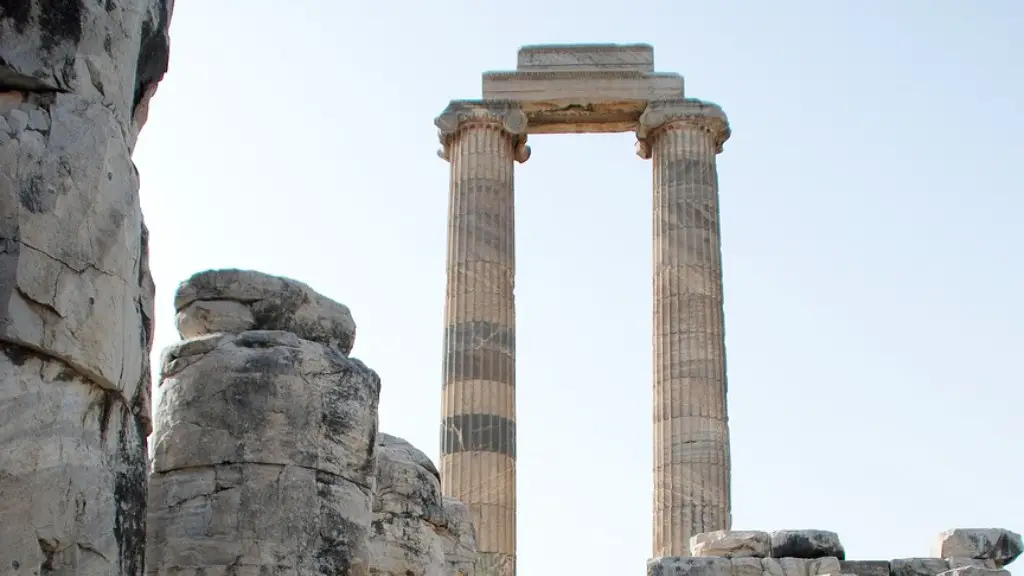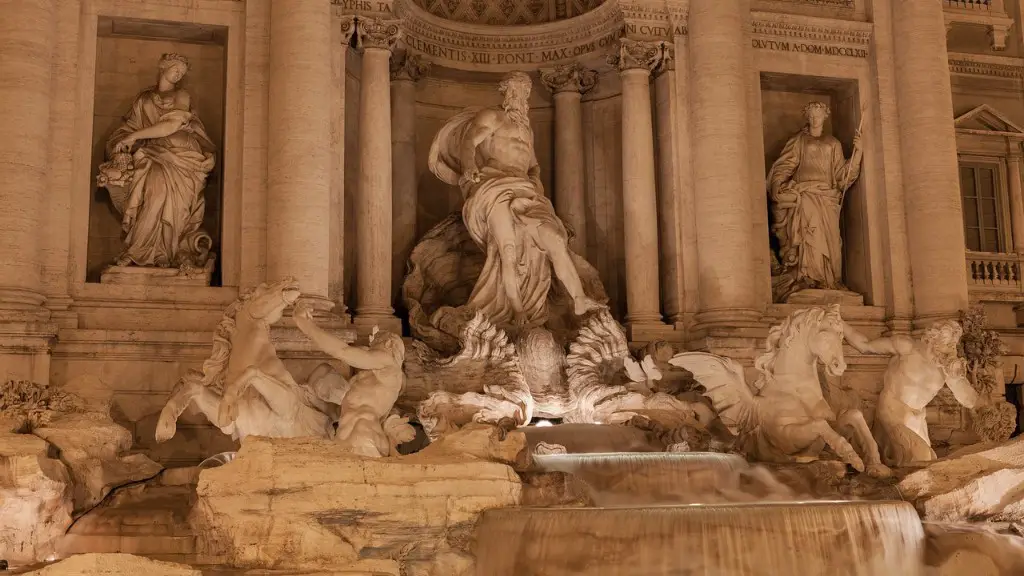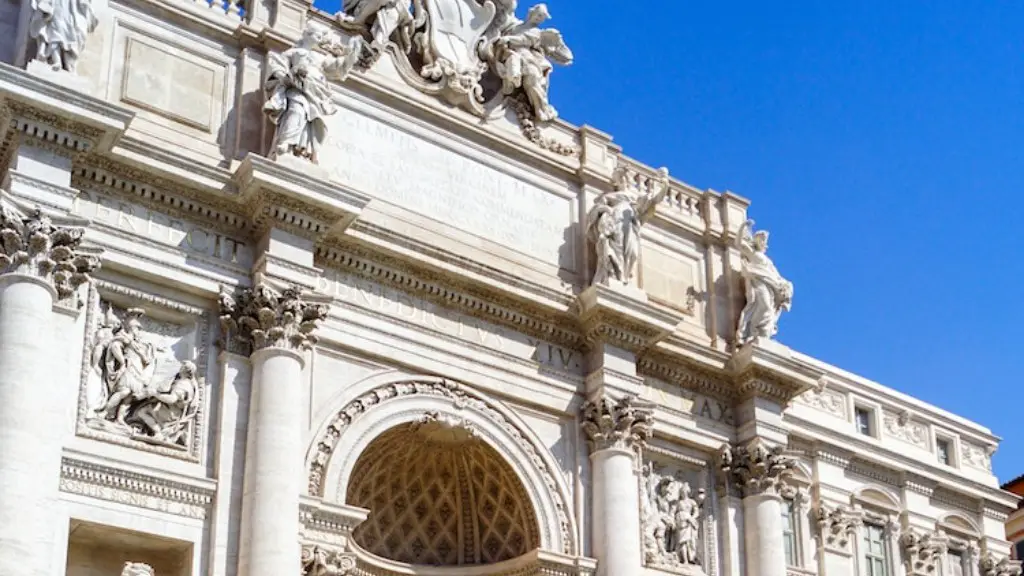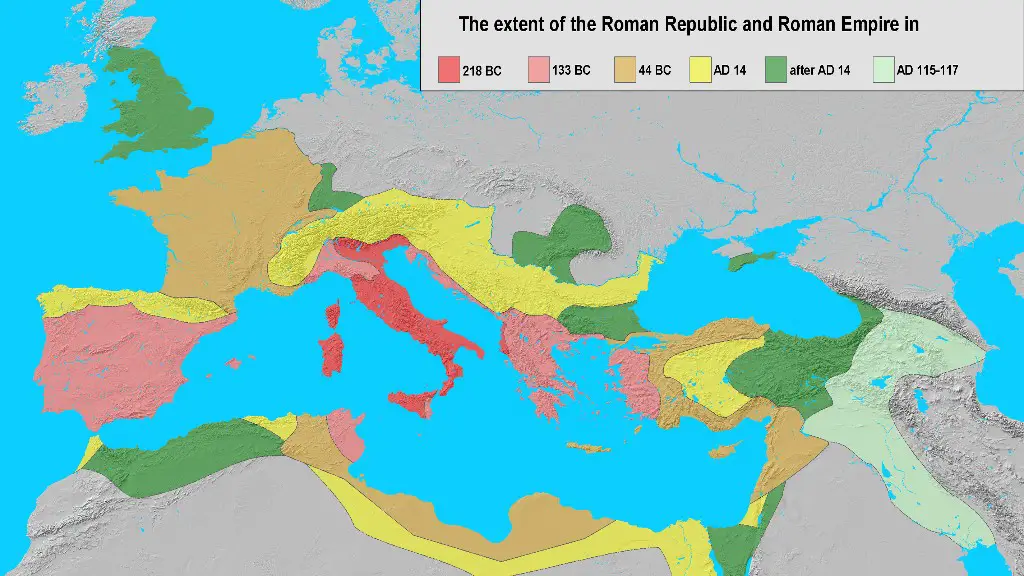Architecture in ancient Rome had a profound influence on the development of art and design in the entire Western world. The Romans were renowned for their superb craftsmanship, grandiose construction projects and engineering achievements, and their architecturally-oriented approach to urban planning. Architecture was key to the success of the Roman Empire, with its large, flourishing cities including its renowned capital city of Rome.
Overall, ancient Roman architecture sought to display the prestige, power and wealth of the ruling Roman elite. This objective was achieved through the elaborate column-based designs, intricate mosaics and narrative frescos, and bold use of color within the design of their buildings. The Roman villas, baths, temples and arenas were designed with grandeur and imaginative flair, leaving behind a rich and lasting legacy. Additionally, their important contribution to the development of civil engineering, such as the construction of aqueducts, bridges, and the Pantheon, have remained influential to the present day.
In order to understand why architecture was important in ancient Rome, it is essential to appreciate the role of the various temples and arenas within the city. For example, the Roman people developed many new religious cults and goddesses which played a critical part in their faith, culture and way of life. Temple complexes made of marble and stone were erected to honour these gods, serving as a physical reminder of their power and importance. Likewise, the grand arenas were used by the ruling elite to stage their thrilling chariot races, spectacles and games. These impressive circus structures, constructed of large blocks of stone and capable of accommodating vast numbers of people, demonstrated the presence and authority of the Roman Empire.
Apart from their religious and entertainment purposes, Roman architecture was also used to show the status and power of Rome. Grand villas, used to house the wealthy and powerful, were built to display their wealth and importance. They were constructed in elaborate and imaginative designs, with opulent frescos, floor mosaics and grand staircases in the centre. Similarly, the Imperial Palace (Palatium) in the centre of Rome was adorned with gold and statues to demonstrate the prosperity and magnificence of Rome. The Roman architects of the time had a highly developed sense of design and composition, which is evident in the spectacular remains of their monumental buildings.
Finally, another important aspect of Ancient Roman architecture was the use of innovative engineering techniques. The aqueducts system and the incredible arches of the aqueducts and other structures, along with their masterful architectural designs, demonstrate their avid interest in mastering engineering and technological advancements. As mentioned before, the magnificent Pantheon of Rome, with its incomparable dome, is considered a feat of engineering excellence, and continues to inspire current engineers.
Public Architecture
Ancient Rome was a major center of public architecture and the basis of many of the city’s most famous structures can be found in its numerous public buildings. In classical Rome, the most iconic public structures included such enduring structures as the Pantheon and the Colosseum. The Pantheon is arguably the most impressive of the public buildings, with its giant rotunda, domed ceiling, oculus and impressive engineering, it stands as an incredible example of durable Roman architecture. Similarly, the Colosseum is one of the most imposing of the public buildings, its size and grandiosity an enduring reminder of Rome’s might and extravagance of the time.
What is perhaps less known about Ancient Rome is its equally impressive public baths. The public baths in Rome served not just as a way to keep clean, but also as a community gathering place, with its wide variety of activities, such as leisure, exercise, and socialising. The ruins of the numerous public baths found in Rome today is testament to their popularity as well as their architectural quality, displaying the ingenuity of the Roman engineers and architects.
Private Architecture
In addition to the impressive public structures, ancient Rome was also home to some equally brilliant private structures. The most common of these are the villas, the lavish residences of the wealthy and powerful citizens of Rome. These luxurious abodes were constructed in a range of styles, ranging from the domus to the much more extravagant palatial villas. The domus was an opulent residence that was typically centrally placed in a Roman city or town, while the sprawling palatial villas were the grand homes of the most important and influential citizens. The villa designs were characterised by a mix of grandiose statues, impressive frescos and vibrant mosaics, all of which served to display the wealth, power and influence of the ruling elite.
Influence
Roman architecture has been highly influential across the Western world, with many of its styles, techniques and designs being developed, refined, and passed down to the present day. The use of the arch in road and bridge construction is perhaps its most lasting legacy, with structures such as the Pont du Gard in France being a testimony to its enduring genius. Similarly, the spread of the domus from Rome to Italy, France and Spain has resulted in the persistence of the classical Roman domed roof and centrality in many modern civic planning.
Likewise, the various pagan and religious designs that were employed in ancient Rome had a major influence on modern religious architecture, with their grand and elaborate temples, basilicas and cathedrals, heavily based on the previous Roman models. The influence of the dome structure is also highly evident in modern designs, seen in the architectural traditions of America, Europe, South Asia and North Africa.
Sustainable Innovations
Finally, it is important to note that the Romans were successful in utilising the available resources to the fullest. Sustainable innovations such as the use of the arch structure to bear great weight, and the building of rotundas and round passes both increased the durability of their buildings and decreased the number of materials used. The Roman engineers were also known to make use of natural resources such as lava and volcanic ash to build durable materials.
In conclusion, architecture was an important part of Ancient Rome. Their use of imaginative designs, engineering innovations and their religious and spectacle-based architectures all contributed to the long-lasting legacy of Rome and its architecture.
Legacy
The legacy of Ancient Roman architecture continues to live on even today, with its rich and varied designs, techniques and approaches having been passed down through the ages. In terms of urban planning, Rome’s designs of grand villas and temples and its use of the arch structure for bridges and walls continue to be implemented in modern designs. Similarly, its iconographic religious images and the resilient building techniques have served as the basis of many of the religious and civic planning in the modern world.
Also, its bright and vivid use of colors, and its imaginative and elaborate designs are seen in modern art, design and architecture. Finally, the engineering feats of Ancient Rome, such as the Pantheon and other large projects, have served as a great source of inspiration for modern architects, with engineers still attempting to duplicate the magnificence of these ancient architectural accomplishments.
Conclusion
In conclusion, it is evident that architecture played a pivotal role in the success of Ancient Rome. Its superb craftsmanship, grandiose construction projects, engineering achievements and its architectural-orientated approach to civic planning have served as a major source of inspiration for many of the modern designs and traditions found all over the world. The monuments and relics of the Roman Empire still stand in testimony of the grandeur and power of its architecture.



